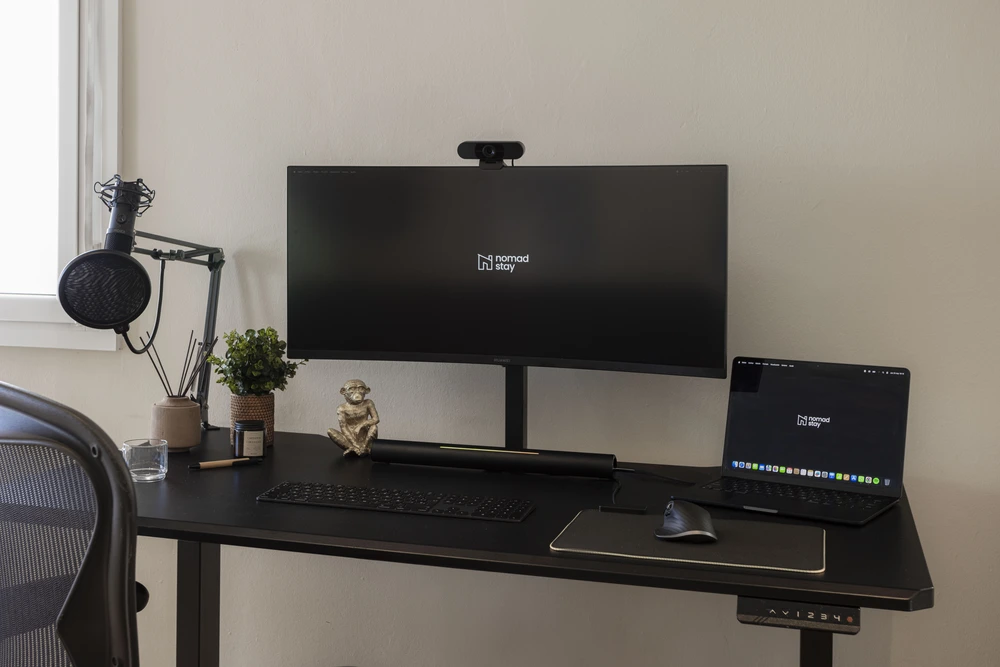Starlink Roam Plan Changes: A European Digital Nomad's Nightmare - The Complete Story

Starlink's new Roam plan limits users to two months per country, disrupting European digital nomads' plans. This article covers the policy change regarding Starlink, its impact, and what alternatives exist.
Introduction to Starlink Roam Plan Changes
Starlink, operated by SpaceX, has revolutionized internet connectivity for people on the move with its Roam plan. Designed to provide high-speed, low-latency internet access in even the most remote locations, the Roam plan has become a lifeline for digital nomads, travelers, and those living in areas with limited internet availability. With coverage spanning over 100 markets worldwide—including Latin America, Canada, and many other countries—Starlink enables customers to stay online wherever their journey takes them.
A key innovation is the Starlink Mini, a compact and portable internet kit that makes it easy to carry reliable connectivity in a backpack or suitcase. This miniaturized version of Starlink's technology allows users to access the internet from virtually anywhere, making it ideal for remote work, travel, and adventure. Whether you're exploring the wilds of Latin America or working from a cabin in Canada, Starlink's Roam plan and Mini device ensure you have the access and availability you need to stay connected.
Background on Starlink
Starlink is a global satellite internet service that has rapidly gained traction for its ability to provide fast, reliable, and secure connectivity in places where traditional internet options are limited or unavailable. The system is built on a constellation of low-Earth orbit satellites, supported by a network of ground stations and advanced user terminals. With regulatory approval in countries like Canada and ongoing expansion into other regions, Starlink's service is expected to reach even more users around the world.
The company offers a variety of internet plans tailored to different needs, including residential, business, and mobile options. Prices for residential service start at $80 per month, making high-speed internet more accessible to people in rural and underserved areas. As Starlink continues to launch new satellites and secure regulatory approval in additional markets, its system is expected to provide even broader coverage and improved connectivity for users across the globe.
Technical Aspects of Starlink
At the heart of Starlink's ability to provide high-speed internet connectivity is its advanced technology. The system relies on a network of satellites equipped with Hall-effect thrusters, which help maintain their precise orbit and ensure continuous coverage. User terminals, such as the Starlink Mini, utilize phased array antennas to track satellites in real time, delivering a stable and fast connection even while on the move.
Security is a top priority for Starlink, with robust features like end-to-end encryption and secure authentication protocols designed to protect user data and ensure privacy. Ground stations play a vital role in the network, linking the satellites to the global internet backbone and enabling rapid data transfer. The combination of these technical innovations allows Starlink to provide high-speed, reliable, and secure internet access to users in remote and challenging environments, making it a standout choice for those who need connectivity beyond the reach of traditional networks.
Key Takeaways
-
Starlink's recent policy change limits Roam subscribers to two months of service per country, drastically reducing flexibility for digital nomads who previously enjoyed continent-wide access for €59/month.
-
The new restrictions have forced many users to reconsider their connectivity options, leading to exorbitant costs for alternatives that fail to meet the needs of frequent travelers.
-
User dissatisfaction is rising, with a significant number of cancellations and hardware returns, highlighting a disconnect between Starlink's services and the realities faced by the digital nomad community.
Starlink's recent redefinition of "countrywide" coverage from Europe-wide to single-country only has fundamentally altered the landscape for European digital nomads. What was once a seamless, €59/month plan enabling continent-wide travel is now restricted to a two-month travel limit per country, effectively dismantling the freedom that many of us relied on. The cost jump to viable alternatives is staggering, ranging from €284 to €1176 per month, making the once affordable Starlink Roam plan impractical for our needs.
This article will explore:
-
The silent policy shift
-
Its devastating impact on digital nomads
-
The ineffective alternatives
-
The broader industry context
-
User reactions
-
Strategic missteps by Starlink
-
Potential solutions and predictions for the future.
Whether you're a current Starlink user or considering alternatives, this comprehensive review will provide the insights you need to navigate this new, more restrictive landscape.
What Changed - The Silent Policy Shift
Starlink has made significant changes to its Roam service plans, shifting from a more flexible policy to one with stricter limitations. This silent policy shift has caught many users off guard, disrupting their travel plans and forcing them to reconsider their connectivity options.
Previous Policy: The Golden Age
Under the previous Roam plan, digital nomads enjoyed unparalleled freedom:
-
For just €59/month, the plan covered all of Europe.
-
Users could travel across 27+ countries without facing any additional charges.
-
This was perfect for those living the van life, allowing them to roam freely without worrying about artificial borders within the European continent.
The original Roam plan supported long-term stays across multiple countries, making it an ideal solution for digital nomads. There were no penalties or restrictions, allowing us to stay connected and productive regardless of where we were in Europe. This golden age of connectivity now seems like a distant dream.
New Restrictions: The Betrayal
The new policy imposes a two-month limit for using Starlink services outside the registered country, creating significant travel anxiety for users. There is no grace period or warning system, and the enforcement is immediate and strict. This zero-tolerance policy eliminates the flexibility that digital nomads once enjoyed, forcing us to return to our registered country every 60 days.
Users can face immediate service restrictions if they exceed the two-month allowance without prior notice. This lack of flexibility and the threat of service being blocked without permission have made Starlink Roam a limited and less viable option for many of us.
The Real-World Impact - Dreams Destroyed

Changes in Starlink's roaming policies have disillusioned many users, particularly impacting digital nomads. The once-promising solution for seamless connectivity across Europe has now become a source of frustration and disruption.
For Digital Nomads: Career-Ending Restrictions
Take the example of a van life couple who planned a six-month European tour, traveling from Germany to Italy, Spain, Portugal, France, and the Netherlands. Under the new policy, they are forced to return to Germany every 60 days, completely destroying their itinerary. Each forced return trip costs an additional €200, adding a significant financial burden to their travels.
They attempted to use the address change features, which is possible free of charge but only once every three months. However, this solution fails as the timeline doesn't match their travel needs, creating service gaps and further disrupting their plans.
Digital nomads now face significant challenges with the new Starlink policies, disrupting their ability to travel freely across Europe.
Geographic Absurdity: When Policies Ignore Reality
Starlink's policies often overlook the unique geographical and travel needs of users from small nations like Luxembourg and Andorra. In these countries and other countries, Starlink Roam becomes essentially useless, as the new restrictions create impossible situations. These countries are smaller than some US states, and the policy fails to recognize the practicalities of travel within these regions.
This geographic absurdity highlights the disconnect between Starlink's policies and the realities of European travel.
Available Alternatives (And Why They're All Terrible)

Most mobile internet plans come with limitations that can be frustrating for users, such as data caps and throttling after a certain usage level. While there are alternatives to Starlink Roam, they often fall short in terms of cost, convenience, and practicality. Additionally, these alternatives may differ in download speeds and streaming capabilities compared to Starlink, which can impact activities like video calls, online gaming, and remote work.
Mobile Priority Plan: The Price Shock
The Mobile Priority Plan offers a tiered pricing model, with the "budget" option costing €284 per month for 50GB of priority data. This represents a staggering 480% increase from the original €59/month Starlink Roam plan. For many digital nomads, 50GB is simply not enough, making this option barely viable for light users only. Once the 50GB data cap is reached, download speeds may be significantly reduced, impacting your ability to stream, browse, or work efficiently.
The high cost of these plans is a significant financial burden for users who need to pay for reliable internet access on the go.
5G Mobile Data: The Obvious Alternative
5G mobile data plans offer:
-
A flat-rate pricing model that can be more predictable and budget-friendly for consumers
-
For about €40 per month, users can enjoy true mobile data flat-rate with no country restrictions
-
Compliance with EU roaming regulations
5G plans also support streaming and other high-bandwidth activities such as video calls, online gaming, and remote work, even in remote locations.
The established infrastructure of 5G networks means that users can expect high-speed internet access across Europe without the artificial limits imposed by Starlink. This makes 5G a compelling alternative for those seeking reliable connectivity and speeds.
Address Switching: The Bureaucratic Nightmare
Address changes are theoretically possible "free of charge but only once every three months." This allows for extended country stays, but it requires users to have official addresses in each country, adding a layer of complexity to their travels.
The process of changing your registered address with a service provider is often lengthy and involves strict regulations, making it a bureaucratic nightmare for digital nomads.
Legal and Competitive Chaos

The policy changes by Starlink need to be understood within the broader industry and legal landscape. SpaceX's satellite development division has been instrumental in driving Starlink's expansion, overseeing the restructuring and focus on key projects. The clash between Starlink's policies and EU regulations, as well as the competitive pressures from other providers, play a significant role in shaping the current situation.
As the EU advances projects like IRIS², regulatory competition intensifies. Starlink undertakes various missions, including satellite launches, regulatory approvals, and service expansion to new markets, to maintain its competitive edge.
Regulatory scrutiny is increasing, making operation compliance critical for Starlink. The company must meet regulatory deadlines by specific dates to ensure continued service and avoid penalties.
Regulatory Maze: EU Law vs. Starlink Policy
The EU has established clear roaming rights, which state that users must be able to take their subscriptions with them and use them within the EU without restrictions. This precedent is well established with mobile carriers, who are required to offer free roaming under EU regulations.
Starlink must ensure its operation aligns with EU law by specific dates to maintain compliance with these regulations.
Additionally, the EU is developing its own satellite system, IRIS², to compete with Starlink and enhance its telecommunications security and resilience. A new Space Act from the EU may impose stricter regulations on satellite services like Starlink, leading to increased scrutiny for Elon Musk's operations.
Terms of Service Ambiguity: The "May" Loophole
Starlink's previous service plan included a clause that allowed it to enforce a policy requiring users to change their registered address, but this was rarely put into practice. The term 'may' in Starlink's terms implies a lack of obligation to enforce policy changes, leading to ambiguity in customer agreements.
The new plans use identical "MAY" language, but the enforcement has become stricter, creating confusion and frustration among users.
Competitive Landscape: Starlink's Self-Inflicted Wound
Traditional mobile carriers often provide better value for users seeking portable internet options compared to Starlink. Starlink's promise of remote coverage has been diminished by its higher pricing compared to more affordable mobile data plans. This misstep has allowed competitors to gain an advantage, undermining Starlink's unique selling proposition. Additionally, policy changes in various countries have impacted Starlink's ability to sell its services in new markets, affecting its commercial deployment and regulatory approvals.
User Reactions and Community Response
The digital nomad community has not taken Starlink's policy changes lightly. Many users are turning to online platforms to search for solutions and updates regarding these changes. Users are expressing their dissatisfaction through various channels, and the community is rallying to find workarounds and share information.
Mass Exodus: Hardware Returns and Cancellations
The immediate financial impact of Starlink's policy changes has been significant, with many users opting to return their hardware rather than continue with the service. Many customers are returning their Starlink units, sometimes shortly after purchase, due to dissatisfaction with the new restrictions. For instance, one user decided to send back their recently purchased Starlink Mini because the new restrictions made it impractical for their needs. Another user was able to return their Starlink Mini even though their 30-day free trial had already expired, indicating a willingness among customers to forfeit trial periods due to dissatisfaction and seek a full refund.
This wave of returns and cancellations has likely impacted Starlink's revenue and could affect the availability of hardware units for new users. The event underscores the widespread frustration and disappointment among the user base, highlighting the misalignment between Starlink's policies and the needs of its customers, including the option for a refund.
Community Workarounds and Information Sharing
In response to the new restrictions, users have turned to online forums and communities to share their experiences and strategies for navigating the policy changes. Many have found out about the enforcement of the new rules through these unofficial channels rather than from Starlink's official communications. This underground network of information has become a vital resource for users trying to make sense of the new restrictions and find ways to cope.
Crowdsourced policy interpretation has allowed users to pool their knowledge and come up with creative solutions to extend their connectivity. Users often share detailed instructions for setting up alternative connectivity options or for navigating Starlink's restrictions, making it easier for others to follow step-by-step guidance. This community-driven approach has provided some relief, but it also highlights the lack of clear communication from Starlink and the confusion surrounding the new policies.
Regional Enforcement Variations
Despite the strict new policies, enforcement has been inconsistent across different regions. Some users report that they have been able to continue using Starlink services without interruption, even after exceeding the two-month limit. For example, one user recently spent five months in Norway without facing any restrictions, suggesting that the policy may not be uniformly enforced.
This variation in enforcement has created a sense of uncertainty among users, as it's unclear when and where the new rules will be applied. The inconsistency further complicates the situation for digital nomads trying to plan their travels and maintain reliable connectivity.
Business Implications - Strategic Missteps

Starlink's strategy aims to deliver internet connectivity to underserved regions, but the recent policy changes have potential consequences for revenue generation and customer satisfaction.
The company's reputation has been negatively impacted by perceived failures in customer service and product reliability. Starlink's hardware is manufactured using advanced, cost-effective processes, with satellites and components mass-produced in dedicated facilities. These manufacturing changes may also impact SpaceX's satellite development division, leading to restructuring or reorganization efforts to improve efficiency and focus on key projects.
For Starlink: Revenue and Reputation Damage
Digital nomads were the perfect early adopters for Starlink, representing a high-value customer segment with significant influence. However, the negative experiences and word-of-mouth marketing now spreading across social media platforms are damaging Starlink's public image. Customer dissatisfaction has led to a significant increase in service cancellations among early adopters, further harming the company's reputation.
The backlash from the policy changes has also highlighted the challenges of maintaining a loyal customer base in a competitive market. The damage to Starlink's reputation could have long-term consequences for its ability to attract and retain customers.
For Users: Stranded Investments and Forced Migrations
Many users have expressed frustration at the financial investments they made in proprietary hardware that is now rendered useless due to Starlink's policy changes. These proprietary systems often include specialized electronics such as Wi-Fi routers, satellite dishes, and power adapters, which are integral to the product's performance and connectivity. It is also important for users to check product labels and packaging to verify the authenticity of their Starlink electronics, as legitimate devices feature proper labels and serial numbers. Specialized installations, such as mounting hardware for RVs, have become worthless, resulting in a sense of financial loss. This vendor lock-in has backfired, leaving users who are interested with stranded investments and no viable alternatives, as their investments have effectively been sold.
The changes in service policies have forced some users to seek alternative providers, often at higher costs. The financial and logistical burden of switching providers adds to the overall frustration and disruption caused by Starlink's new restrictions.
Technical and Practical Solutions
Despite the challenges posed by Starlink's policy changes, there are technical and practical solutions that users can consider to navigate the new landscape. For optimal results, follow the setup instructions carefully and download the Starlink app from the appropriate store, such as the Google Play Store, to monitor your connection and manage your device.
These strategies can help optimize connectivity and connect minimize disruptions.
Hybrid Connectivity Strategies
One effective approach is to adopt a hybrid connectivity strategy, combining 5G mobile data as the primary connection for most locations with Starlink as a backup for remote areas. This setup can help optimize costs by using the more affordable 5G plans for everyday use while leveraging Starlink's remote coverage when necessary. With this approach, you can use your phone for satellite-to-phone connectivity and enjoy reliable streaming, making it easier to handle video calls, online gaming, and remote work even in areas with limited traditional coverage.
A hybrid model can provide higher bandwidth and more stable connections by leveraging both satellite and cellular technologies.
Policy Navigation Tactics
To manage the new policy constraints, users can:
-
Employ strategic address changes for planned long stays.
-
Use legal address services in target countries to ensure compliance with Starlink's requirements.
-
Optimize timing for maximum coverage to enhance service delivery and minimize disruptions.
Navigating local regulations is crucial for implementing connectivity solutions across different countries in the context of regulatory approval development.
Future-Proofing Approaches
Investing in diverse technologies allows organizations to adapt to changing connectivity demands swiftly. Ensuring multiple vendor partnerships can safeguard against disruptions from any single provider, mitigating risks through redundancy.
By embracing a future-proofing approach, users can protect themselves from similar policy changes and maintain reliable connectivity.
Staying Connected While Traveling
For those who live life on the road, Starlink's Roam plan offers a game-changing solution for staying connected. Whether you're traveling through Europe, exploring Germany's countryside, or working remotely from a café in France, the Starlink Mini ensures you have access to the internet wherever you go. Its compact design means it can be easily packed and carried, making it perfect for digital nomads, frequent travelers, and anyone who values flexibility.
The global coverage provided by Starlink means you're not limited by the reach of cellular networks or the availability of local Wi-Fi. With the Mini, you can set up a reliable internet connection in minutes, whether you're in a bustling city or a remote mountain village. This level of access and portability empowers users to work, communicate, and stay entertained no matter where their travels take them.
Benefits of Remote Work and Travel
The rise of remote work has transformed the way people live and travel, and Starlink's internet services are uniquely positioned to support this new lifestyle. With fast, reliable connectivity, remote workers can collaborate with teams, attend virtual meetings, and manage projects from anywhere in the world. The Starlink app makes it easy to monitor your data usage, manage your account, and access customer support whenever you need it.
For those who are new to Starlink, the company offers a 30-day trial period—if you're not satisfied with the service, you can return your equipment for a full refund. This satisfaction guarantee, combined with responsive customer support and a user-friendly app, ensures that customers can try Starlink risk-free. As global connectivity becomes increasingly important, Starlink is expected to play a major role in enabling remote work and travel, helping people stay connected, productive, and satisfied wherever they are on the planet.
Looking Forward - Scenarios and Predictions
Starlink's growth trajectory indicates a plan to increase its satellite constellation significantly, potentially influencing market dynamics on this planet. Upcoming satellite deployment missions are scheduled, with key dates set for regulatory approvals and operational milestones. However, the company must navigate various regulatory challenges as it launches its services globally.
Potential Policy Reversals
User feedback and competitive pressure from 5G improvements could force Starlink to reconsider its policies in Europe. The mass exodus of users may prompt the company to alter its approach to retain subscriber loyalty.
Shifts in user feedback may prompt Starlink to alter its policies in Europe to retain subscriber loyalty.
Alternative Technology Evolution
Advancements in 5G technology are expected to enhance connectivity options in rural areas, competing directly with Starlink. Improvements in speed, reliability, and cost reductions through competition will make 5G an increasingly attractive option for users.
Additionally, advancements in 5G networks are expected to enhance coverage in rural areas and improve overall service quality.
User Adaptation Strategies
In the short term, users are advised to:
-
Delay Starlink purchases until there is greater clarity on future policies.
-
Invest in high-quality 5G solutions as a viable alternative to satellite internet.
-
Monitor enforcement patterns to stay informed about policy changes and adapt accordingly.
Investing in superior 5G solutions is recommended as a viable alternative to satellite internet.
Conclusion - The Great Starlink Betrayal

Starlink's European policy change represents more than a simple terms of service update—it's a fundamental betrayal of the digital nomad community that helped establish satellite internet as a viable travel solution and a sign of changing priorities. Starlink was once considered the world's leading solution for global internet connectivity, setting the standard for advanced, worldwide access.
The transformation from a €59 continent-wide freedom enabler to a restrictive, country-locked service effectively eliminates the product's core value proposition.
The Damage Assessment
Users face cost increases of 480% to 1,990% for equivalent functionality, making traditional mobile data the obvious choice. The operational impact is also significant, as many users feel that the new policy renders Starlink Roam impractical for their travel needs.
Strategically, Starlink has voluntarily ceded the European nomad market to mobile carriers, abandoning a high-value, influential customer segment.
The Irony of Success
Starlink's technical achievement—reliable satellite internet anywhere on Earth—has been undermined by artificial policy restrictions that ignore European realities. The company solved the hard problem of satellites connectivity only to create an artificial one with bureaucratic borders, highlighting the irony of its success in the sky.
The Path Forward
Until Starlink addresses these fundamental misalignments with European travel patterns, digital nomads should embrace the superior value proposition of 5G mobile data. As one frustrated user summarized: "Now Starlink Roam became more or less useless for most."
For a company built on the promise of connecting the world, becoming useless to the very people who most need global connectivity represents a strategic failure of historic proportions.
Summary
Starlink's policy shift has shattered the dreams of many digital nomads, transforming a once-revolutionary service into a restrictive and impractical option. The real-world impact, combined with the lack of viable alternatives, underscores the significance of this change. As users navigate this new landscape, the broader industry context and potential future developments will be critical to watch.
Ultimately, the future belongs to services that understand and adapt to their users' needs, rather than imposing outdated constraints. The digital nomad community must remain vigilant and adaptable, seeking out the best connectivity solutions to ensure their continued freedom and productivity.
Frequently Asked Questions
What was the key change in Starlink's Roam plan?
The key change in Starlink's Roam plan is that it now offers "countrywide" coverage limited to single countries only, with a two-month travel limit in each country.
How has the new policy impacted digital nomads?
The new policy has considerably disrupted digital nomads by imposing a requirement to return to their home country every 60 days, leading to increased travel costs and logistical challenges. This makes long-term travel and remote work more complicated for this demographic.
What are the alternatives to Starlink Roam?
Consider mobile priority plans, 5G mobile data, or address switching as alternatives to Starlink Roam, but be aware that each option has its own unique challenges.
How have users reacted to the policy changes?
Users have expressed dissatisfaction with the policy changes by returning hardware and sharing workarounds, highlighting issues with inconsistent enforcement across different regions.
What are the long-term implications for Starlink and its users?
Starlink's long-term implications include a tarnished reputation and decreased revenue, leading users to potentially seek alternative connectivity solutions due to stranded investments. It's crucial for users to stay informed and adaptable in this evolving landscape.





















